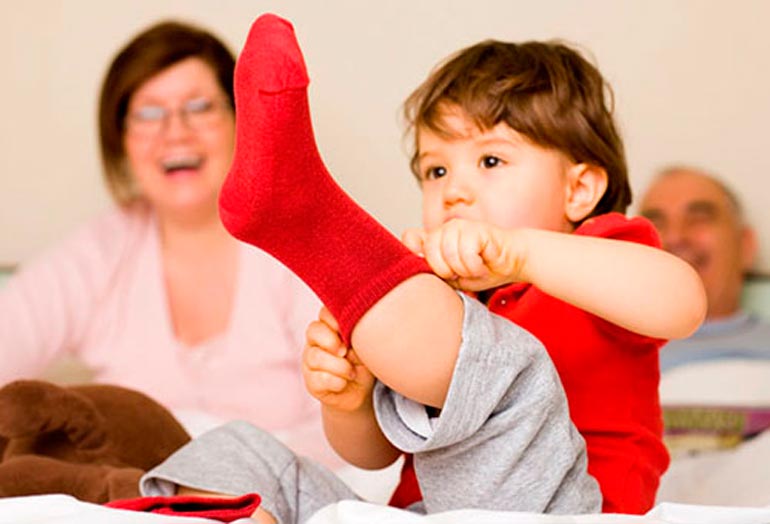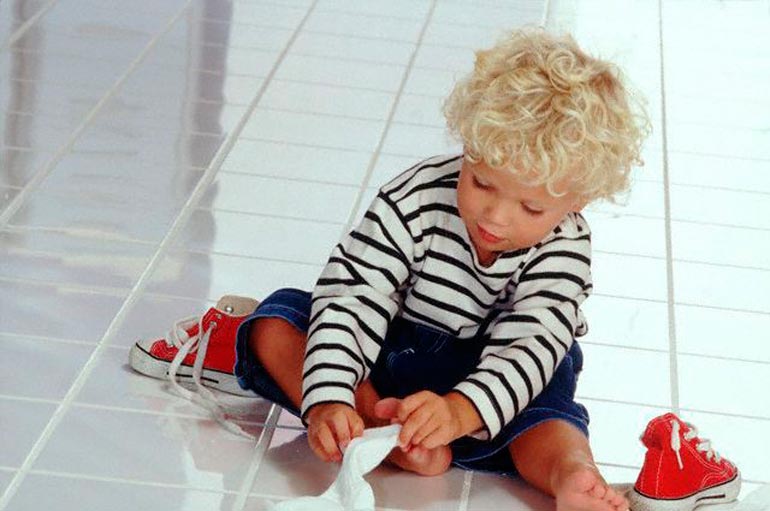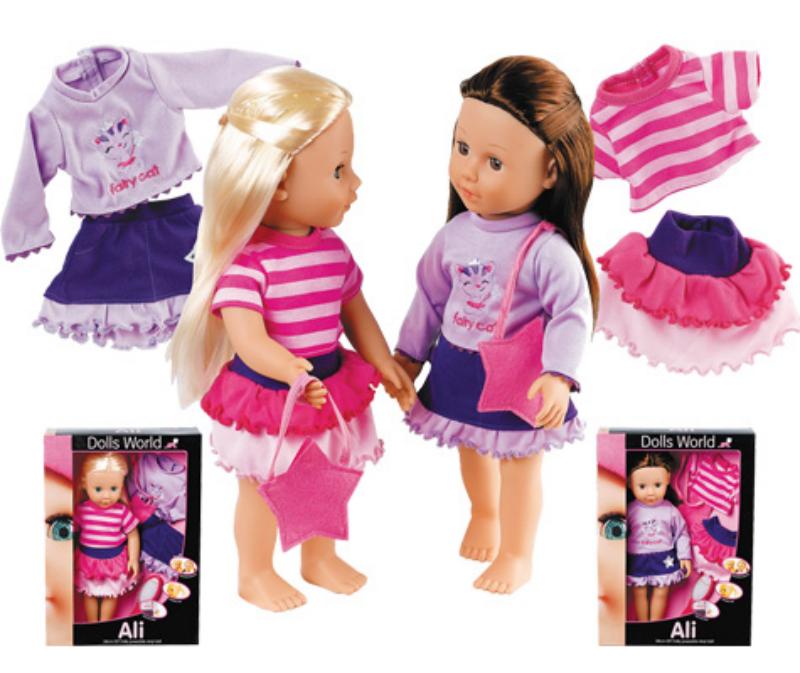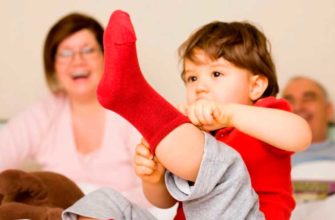It is possible and necessary to encourage independence in a child. When your baby wants to fasten his jacket, put on trousers, tie a scarf - you don’t need to prevent him, and if your baby doesn’t succeed, you don’t need to sharply correct mistakes and, especially, scold. Just gently tell me what inaccuracies he made, and unobtrusively help to dress correctly. Harsh criticism kills self-esteem and the desire to do something on their own. To make the learning process even more effective, you can turn it into a game. During it, the child will master the key skills of independently solving many everyday issues, including dressing without outside help. Be sure to praise your baby for successes and gradually set new, more complex tasks for him.

Psychologists believe that you can begin to teach a child to dress independently from 3 years.
According to psychologists, it is possible to start a child to learn how to dress independently from 3 years. Young mothers need to be patient - the process can take several months. Especially you have to tinker with the boys - as a rule, girls learn to dress faster and more willingly. If it seems to you that the training has already taken too long - do not despair - your baby just needs a little more time.
Duration of training depends on psychological, physical, emotional and other factors. For example, children who receive hyperprotection from adults do not particularly strive for independence. Therefore, it is worth connecting the imagination and come up with new ways to motivate the child to comprehend everyday skills.
It is very important to pay attention in time to the so-called sensitive period, which lasts from 3 to 6 years. The child at this time is especially keen to do everything himself. In no case do not hinder this desire - on the contrary, encourage it in every way. The author of the methodology of early development and the famous teacher Maria Montessori divides the sensitive period of a child aged 0 to 6 years into several stages:
- 0-6 years - speech development;
- 0-3 years - the beginning of the perception of order;
- 0-5.5 years - sensory development;
- 1.5-6.5 years - the perception of small objects;
- 1-4 years - the development of movements and actions;
- 2.5-6 years - development of social skills.
Phrases that help teach your child
The first and most important rule is not to pull the baby when he seeks to dress on his own. Do not scold or criticize him in vain. Naturally, the first time he may not succeed, but it’s okay - he will succeed from the tenth. You need to be prepared for torn buttons, broken zippers, inverted pants and sweaters - In no case do not scold the baby, do not scream or grumble, it is better to show how to do it right! Otherwise, you can discourage the child from learning and trying again. Your support here is very important. Here are a few phrases that cheer up your baby:
- "What a fine fellow! You got dressed very fast today! ”
- “Wow! You button buttons so cleverly! Will you teach me?"
- “You dressed very neat today!” I can’t stop looking! ”
- “It's not scary that the buttons this time are slightly wrongly fastened. When I was little, I often had that too. ”
- “Today you dressed yourself, I almost did not help you! Well done!"
And the phrases from the series “Here you are a sloppier, you can’t dress normally”, you can’t pronounce in any case, otherwise you can discourage your child from showing independence not only in dressing, but in everything else, as he ceases to believe in his strength. Awakening in him the desire to do something himself will awaken much more difficult.

How to make learning more effective
The process of organizing training must be approached very responsibly. At least half an hour should be devoted to dressing, going for a walk or to kindergarten. This time is enough for the child to work out, and at the same time you will not be late.
Patiently explain where the thing has a back, and where before, what is the wrong side of clothing. Repeat this information more than once. To make it easier for the child to remember, first choose things in which it is immediately clear where the front and back sides are. With complex fasteners and shoes with laces, it’s worth the wait (you can choose shoes with Velcro for a start, and only then go to the laces).
If the child asks for help - do not refuse. Your refusal makes the baby feel helpless, and he loses self-confidence. Therefore, it is better to help, but unobtrusively. For example, help put your feet in different legs, and let the child pull and fasten them. This will not only not hurt, but will also help the learning process. And better try to buy the clothes that the child can easily put on himself.
Assistive Games
- Get dressed in a race. Arrange a competition with the baby who will get dressed faster and award a prize. It’s worth giving in, but not too much to make the child more interesting.
- Dress up your favorite doll. Let the child dress his favorite toy the same way he dresses.
- Draw outfits. You can draw with your child clothes that he likes.
- To set a record. Buy an hourglass and tell the child to try to get dressed until all the sand spills out. At first it can be 10 minutes, then 5 minutes, then 3 minutes. Praise and encourage every record.
- Dress Up Games. You can arrange a home fashion show or ask your child to dress up as your favorite fairy-tale character. During the game, the baby will gradually acquire self-dressing skills.
- Games for the development of fine motor skills. Get toys where you need to lace up, assemble, string something. For example, plasticine, constructor, do-it-yourself jewelry set (all these games develop the child’s ability to control his fingers).

Should obedience be developed? Opinion of the psychologist Rail Kashapov:
“Often parents, seeking obedience, think that they have solved the problem. Of course, you can make children obedient, but at the same time they will be notorious, fearful, with a deep sense of guilt and inner suffering. “It is more difficult to raise a healthy, mentally balanced child than just obedient, but slaughtered and with complexes, against which this happy child may not seem very educated.”
Raising a calm, balanced and confident child is more difficult than a clogged and notorious. But a calm and confident child is much happier than too obedient and complaisant, even if against his background he often looks less well-mannered.
READ ALSO:
We teach the baby to dress and undress independently
You are already big: 7 ways to teach your baby to dress independently
Stages of the ability to dress a child









I agree that you must always praise the baby and not just the baby. We still had speech problems, the speech therapist recommended developing fine motor skills so that the fingers worked all the time. Fine motor skills are associated with brain development (let the experts forgive me, but I remember so). We made a lot of different holes in the cardboard and asked the laces to lace up in them. Praise and classes with the baby will instill in him a love of independence, he will strive to dress and undress himself.